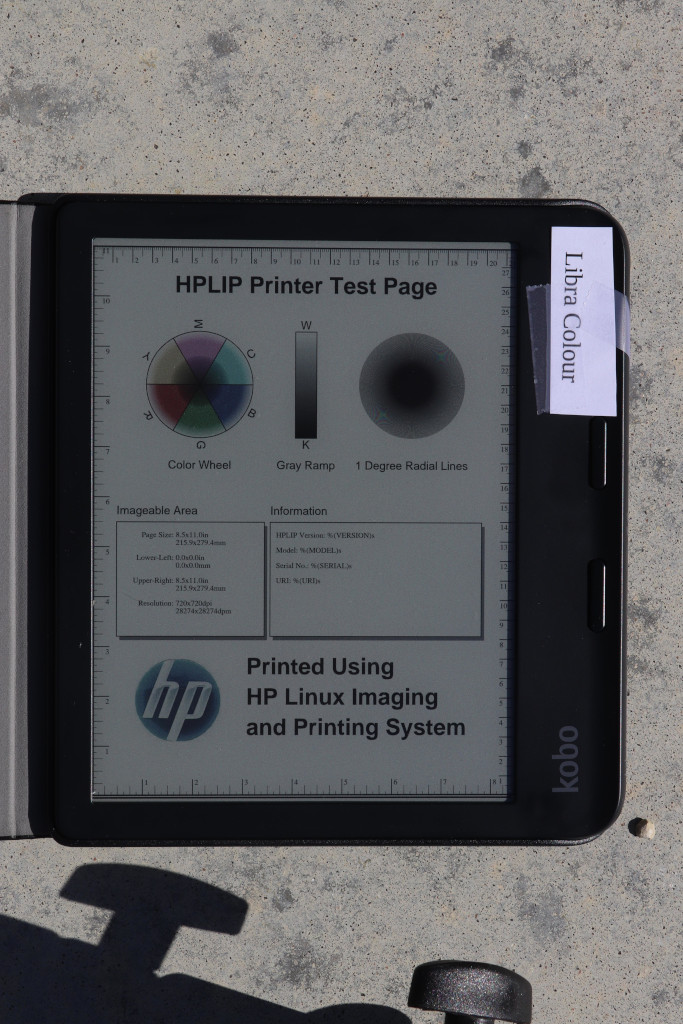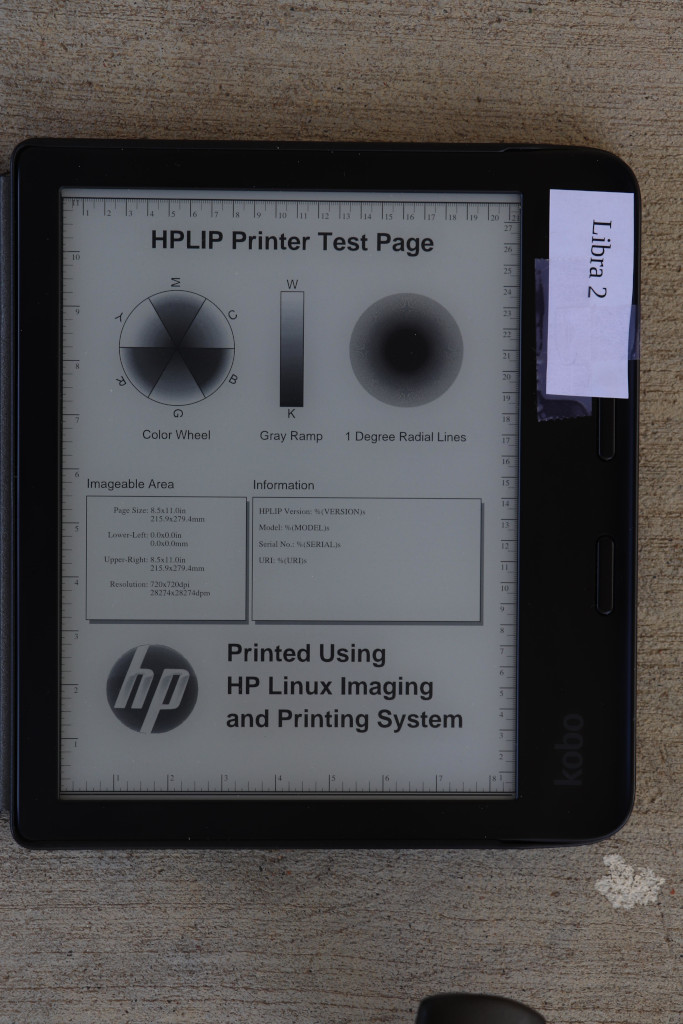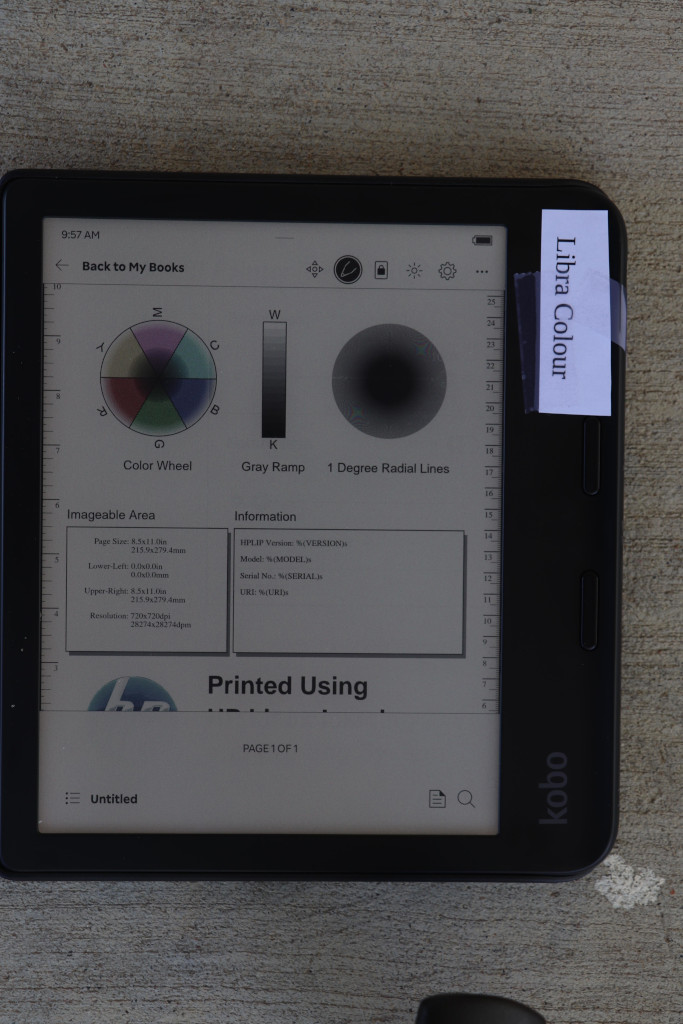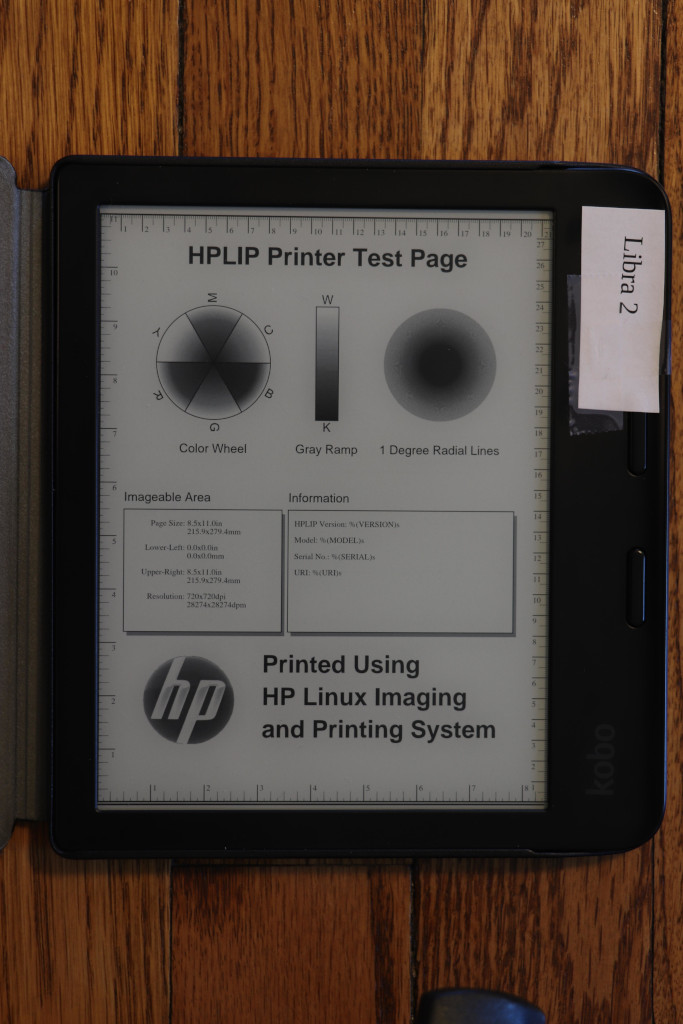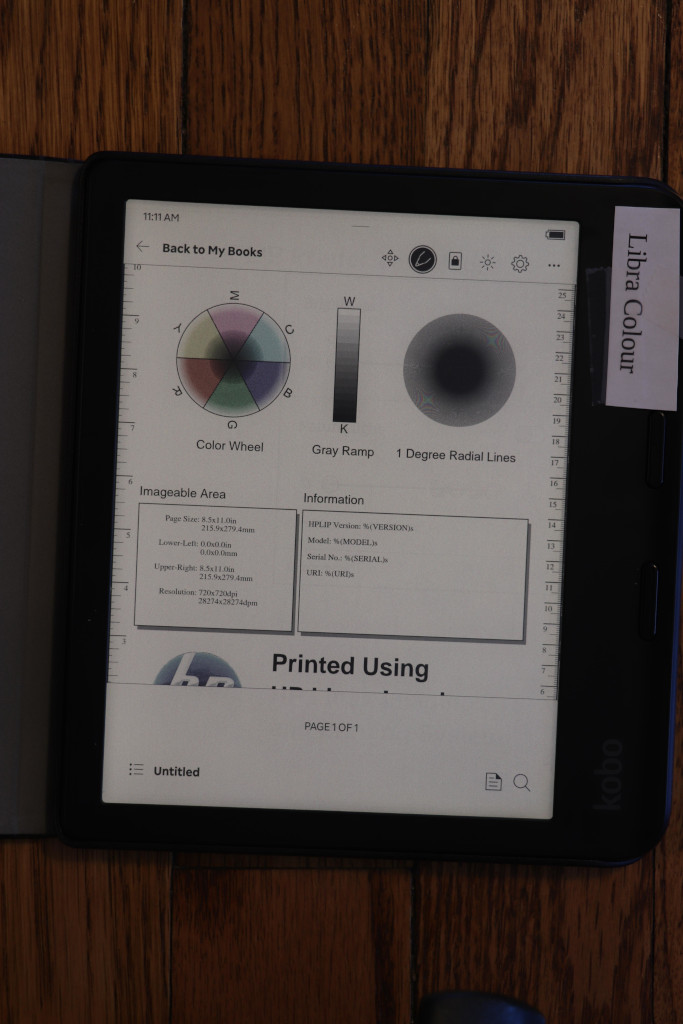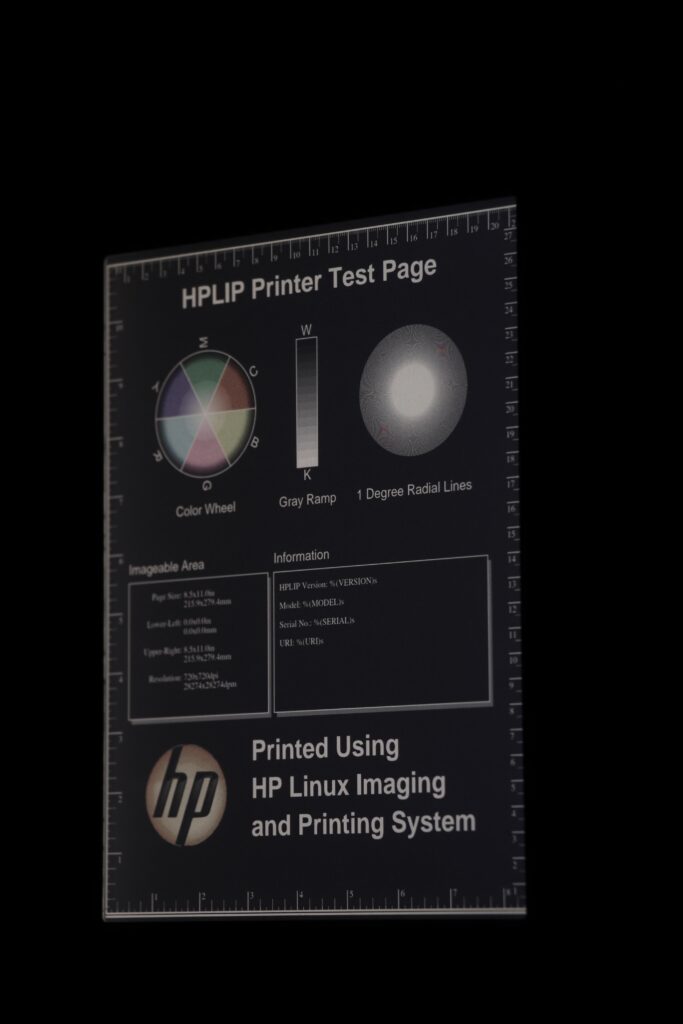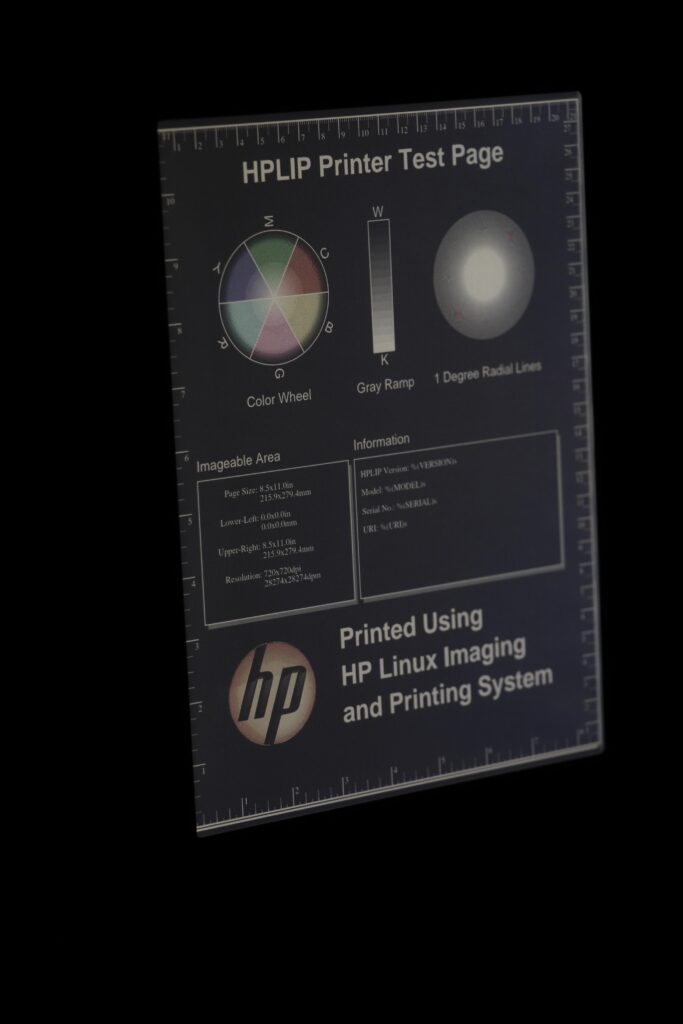I last reviewed email services in 2019. That review focused a lot of attention on privacy. At the time, I selected mailbox.org as my provider, and have been using them for these 5 years since. However, both their service and their support have gone significantly downhill since, so it is time for me to look at other options.
Here I am focusing strongly on email. Some of the providers mentioned here provide other services (IM, video calls, groupware, etc.), and to the extent they do, I am ignoring them.
What Matters in 2024
I want to start off by acknowledging that what you need in email probably depends on your circumstances and the country in which you live. For me, I begin by naming that the largest threat most of us face isn’t from state actors but from criminals: hackers, ransomware gangs, etc. It is important to take as many steps as possible to secure one’s account against that. Privacy and security are both part of the mix. I still value privacy but I am acknowledging, as Migadu does, that “Email as we know it and encryption are incompatible.” Although some of these services strongly protect parts of the conversation, the reality is that most people will be emailing people using plain old email services which don’t. For stronger security, something like Signal would be needed. (I wrote about Signal in 2021 also.)
Interestingly, OpenPGP support seems to be something of a standard feature in the providers I reviewed by this point. All or almost all of them provide integration with browser-based encryption as well as server-side encryption if you prefer that.
Although mailbox.org can automatically PGP-encrypt every message that arrives in plaintext, for general use, this is unwieldy; there isn’t good tooling for searching mailboxes where every message is encrypted, etc. So I never enabled that feature at Mailbox. I still value security and privacy, but a pragmatic approach addresses the most pressing threats first.
My criteria
The basic requirements for an email service include:
- Ability to use my own domains
- Strong privacy policy
- Ability for me to use my own IMAP and SMTP clients on both desktop and mobile
- It must be extremely reliable
- It must not be free
- It must have excellent support for those rare occasions when it is needed
- Support for basic aliases
Why do I say it must not be free? Because if someone is providing a service with the quality I’m talking about here, and not charging for it, it implies something is fishy: either they are unscrupulous, are financially unstable, or the product is something else like ads. I am not aware of any provider that matches the other criteria with a free account anyhow. These providers range from about $30 to $90 per year, so cheaper than a Netflix subscription.
Immediately, this rules out several options:
- Proton doesn’t let me use my own clients on mobile (their bridge is desktop-only)
- Tuta also doesn’t let me use my own clients
- Posteo doesn’t let me use my own domain
- mxroute.com lacks a strong privacy policy, and its policy has numerous causes for concern (for instance, “If you repeatedly send email to invalid/unroutable recipients, they may be published on our GitHub”)
I will have a bit more to say about a couple of these providers below.
There are some additional criteria that are strongly desired but not absolutely required:
- Ability to set individual access passwords for every device/app
- Support for two-factor authentication (2FA/TFA/TOTP) for web-based access
- Support for basics in filtering: ability to filter on envelope recipient (so if I get BCC’d, I can still filter), and ability to execute more than one action on filter match (eg, deliver to two folders, or deliver to a folder and forward to someone else)
IMAP and SMTP don’t really support 2FA, so by setting individual passwords for every device, you can at least limit the blast radius and cut off a specific device if something is (or might be) compromised.
The candidates
I considered these providers: Startmail, Mailfence, Runbox, Fastmail, Kolab, Mailbox.org, and Migadu. I’ll review each, and highlight the pricing of the plan I would most likely use. Each provider offers multiple plans; some may be more expensive and some may be cheaper than the one I reviewed. I included a link to each provider’s full pricing information so you can compare for your needs.
I set up trials with each of these (except Mailbox.org, with which I already had a paid account). It so happend that I had actual questions for support for each one, which gave me an opportunity to see how support responded. I did not fabricate questions, and would not have contacted support if I didn’t have real ones. (This means that I asked different questions of each provider, because they were the REAL questions I had.) I’ll jump to the spoiler right now: I eventually chose Migadu, with Fastmail and Mailfence as close seconds.
I looked for providers myself, and also solicited recommendations in a Mastodon thread.
Mailbox.org
I begin with Mailbox, as it was my top choice in 2019 and the incumbent.
Until this year, I had been quite happy with it. I had cause to reach their support less than once a year on average, and each time they replied the same day or next day. Now, however, they are failing on reliability and on support.
Their spam filter has become overly aggressive. It has blocked quite a bit of legitimate mail. When contacting their support about a prior issue earlier this year, they initially took 4 days to reply, and then 6 days to reply after that. Ouch. They had me disable some spam settings.
It didn’t really help. I continue to lose mail. I don’t know how much, because they block a lot of it before it even hits the spam folder. One of my friends texted to say mail was dropping. I raised a new ticket with mailbox, which took them 5 days to reply to. Their reply was unhelpful. “As the Internet is not a static system, unforeseen events can always occur.” Well yes, that’s true, and I get it, false positives exist with email. But this was from an ISP’s mail system with an address that had been established for years, and it was part of a larger pattern of rejecting quite a bit of legit mail. And every interaction with them recently hasn’t resulted in them actually doing anything to resolve anything. It’s just a paragraph or two of reply that does nothing and helps nothing.
When I complained that it took 5 days to reply, they said “We have not been able to reply sooner as we are currently experiencing a high volume of customer enquiries.” Even though their SLA for my account is a not-great “48 business hour” turnaround, they still missed it and their reason is “we’re busy.” I finally asked what RBL had caught the blocked email, since when I checked, the sender wasn’t on any RBL. Mailbox’s reply: they only keep their logs for 7 days, so next time I should contact them within 7 days. Which, of course, I DID; it was them that kept delaying. Ugh! It’s like they’ve become a cable company.
Even worse is how they have been blocking mail from GrapheneOS’s discussion form. See their thread about it. In short, Graphene’s mail server has a clean reputation and Mailbox has no problem with it. But because one of Graphene’s IPv6 webservers has an IPv6 allocation of a size Mailbox doesn’t like, they drop mail. It’s ridiculous, and Mailbox was dismissive of this well-known and well-regarded Open Source project. So if the likes of GrapheneOS can’t get good faith effort to deliver their mail, what chance does an individual like me have?
I’m sorry, but I’m literally paying you to deliver email for me and provide good support. If you can’t do either of those, you don’t get to push that problem down onto me. Hire appropriate staff.
On the technical side, they support aliases, my own clients, and have a reasonable privacy policy. Their 2FA support exists for the web interface (though weirdly not the support site), though it is somewhat weird. They do not support app passwords.
A somewhat unique feature is the @secure.mailbox.org domain. If you try to receive mail at that address, mailbox.org will block it unless it uses TLS. Same for sending. This isn’t E2EE, but it does at least require things not be in plaintext for the last hop to Mailbox.
Verdict: not recommended due to poor reliability and support.
Mailbox.Org summary:
- Website: https://mailbox.org/en/
- Reliability: iffy due to over-aggressive spam filtering
- Support: Poor; takes 4-6 days for a reply and replies are unhelpful
- Individual access passwords: No
- 2FA: Yes, but with a PIN instead of a password as the other factor
- Filtering: Full SIEVE feature set and GUI editor
- Spam settings: greylisting on/off, reject some/all spam, etc. But they’re insufficient to address Mailbox’s overzealousness, which support says I cannot workaround within the interface.
- Server storage location: Germany
- Plan as reviewed: standard [pricing link]
- Cost per year: EUR 30 (about $33)
- Mail storage included: 10GB
- Limits on send/receive volume: none
- Aliases: 50 on your domain name, 25 on mailbox.org
- Additional mailboxes: Available; each one at the same fee as the primary mailbox
Startmail
I really wanted to like Startmail. Its “vault” is an interesting idea and should contribute to the security and privacy of an account. They clearly care about privacy.
It falls down in filtering. They have no way to filter on envelope recipient (BCC or similar). Their support confirmed this to me and that’s a showstopper.
Startmail support was also as slow as Mailbox, taking 5 days to respond to me.
Two showstoppers right there.
Verdict: Not recommended due to slow support responsiveness and weak filtering.
Startmail summary:
- Website: https://www.startmail.com/
- Reliability: Seems to be fine
- Support: Mediocre; Took 5 days for a reply, but the reply was helpful
- Individual app access passwords: Yes
- 2FA: Yes
- Filtering: Poor; cannot filter on envelope recipient, and can’t build filters with multiple actions
- Spam settings: None
- Server storage location: The Netherlands
- Plan as reviewed: Custom domain (trial was Personal), [pricing link]
- Cost per year: $70
- Mail storage included: 20GB
- Limits on send/receive volume: none
- Aliases: unlimited, with lots of features: can set expiration, etc.
- Additional mailboxes: not available
Kolab
Kolab Now is mainly positioned as a full groupware service, but they do have a email-only option which I investigated. There isn’t much documentation about it compared to other providers, and also not much in the way of settings. You can turn greylisting on or off. And…. that’s it.
It has a full suite of filtering options. They set an X-Envelope-To header which you can use with the arbitrary header match to do the right thing even for BCC situations. Filters can have multiple conditions and multiple actions. It is SIEVE-based and you can download your SIEVE definitions.
If you enable 2FA, you disable IMAP and SMTP; not great.
Verdict: Not an impressive enough email featureset to justify going with it.
Kolab Now summary:
- Website: https://kolabnow.com/
- Reliability: Seems to be fine
- Support: Fine responsiveness (next day)
- Invidiaul app passwords: no
- 2FA: Yes, but if you enable it, they disable IMAP and SMTP
- Filtering: Excellent
- Spam settings: Only greylisting on/off
- Server storage location: Switzerland; they have lots of details on their setup
- Plan as reviewed: “Just email” [pricing link]
- Cost per year: CHF 60, about $66
- Mail storage included: 5GB
- Limitations on send/receive volume: None
- Aliases: Yes. Not sure if there are limits.
- Additional mailboxes: Yes if you set up a group account. “Flexible pricing based on user count” is not documented anywhere I could find.
Mailfence
Mailfence is another option, somewhat similar to Startmail but without the unique vault. I had some questions about filters, and support was quite responsive, responding in a couple of hours.
Some of their copy on their website is a bit misleading, but support clarified when I asked them. They do not offer encryption at rest (like most of the entries here).
Mailfence’s filtering system is the kind I’d like to see. It allows multiple conditions and multiple actions for each rule, and has some unique actions as well (notify by SMS or XMPP). Support says that “Recipients” matches envelope recipients. However, one ommission is that I can’t match on arbitrary headers; only the canned list of headers they provide.
They have only two spam settings:
- spam filter on/off
- whitelist
Given some recent complaints about their spam filter being overly aggressive, I find this lack of control somewhat concerning. (However, I discount complaints about people begging for more features in free accounts; free won’t provide the kind of service I’m looking for with any provider.) There are generally just very few settings for email as well.
Verdict: Response and helpful support, filtering has the right structure but lacks arbitrary header match. Could be a good option.
Mailfence summary:
- Website: https://mailfence.com/
- Reliability: Seems to be fine
- Support: Excellent responsiveness and helpful replies (after some initial confusion about my question of greylisting)
- Individual app access passwords: No. You can set a per-service password (eg, an IMAP password), but those will be shared with all devices speaking that protocol.
- 2FA: Yes
- Filtering: Good; only misses the ability to filter on arbitrary headers
- Spam settings: Very few
- Server storage location: Belgium
- Plan as reviewed: Entry [pricing link]
- Cost per year: $42
- Mail storage included: 10GB, with a maximum of 50,000 messages
- Limits on send/receive volume: none
- Aliases: 50. Aliases can’t be deleted once created (there may be an exeption to this for aliases on your own domain rather than mailfence.com)
- Additional mailboxes: Their page on this is a bit confusing, and the pricing page lacks the information promised. It looks like you can pay the same $42/year for additional mailboxes, with a limit of up to 2 additional paid mailboxes and 2 additional free mailboxes tied to the account.
Runbox
This one came recommended in a Mastodon thread. I had some questions about it, and support response was fantastic – I heard from two people that were co-founders of the company! Even within hours, on a weekend. Incredible! This kind of response was only surpassed by Migadu.
I initially wrote to Runbox with questions about the incoming and outgoing message limits, which I hadn’t seen elsewhere, as well as the bandwidth limit. They said the bandwidth limit is no longer enforced on paid accounts. The incoming and outgoing limits are enforced, and all email (even spam) counts towards the limit. Notably the outgoing limit is per recipient, so if you send 10 messages to your 50-recipient family group, that’s the limit. However, they also indicated a willingness to reset the limit if something happens. Unfortunately, hitting the limit results in a hard bounce (SMTP 5xx) rather than a temporary failure (SMTP 4xx) so it can result in lost mail. This means I’d be worried about some attack or other weirdness causing me to lose mail.
Their filter is a pain point. Here are the challenges:
- You can’t directly match on a BCC recipient. Support advised to use a “headers” match, which will search for something anywhere in the headers. This works and is probably “good enough” since this data is in the Received: headers, but it is a little more imprecise.
- They only have a “contains”, not an “equals” operator. So, for instance, a pattern searching for “test@example.com” would also match “newtest@example.com”. Support advised to put the email address in angle brackets to avoid this. That will work… mostly. Angle brackets aren’t always required in headers.
- There is no way to have multiple actions on the filter (there is just no way to file an incoming message into two folders). This was the ultimate showstopper for me.
Support advised they are planning to upgrade the filter system in the future, but these are the limitations today.
Verdict: A good option if you don’t need much from the filtering system. Lots of privacy emphasis.
Runbox summary:
- Website: https://runbox.com/
- Reliability: Seems to be fine, except returning 5xx codes if per-day limits are exceeded
- Support: Excellent responsiveness and replies from founders
- Individual app passwords: Yes
- 2FA: Yes
- Filtering: Poor
- Spam settings: Very few
- Server storage location: Norway
- Plan as reviewed: Mini [pricing link]
- Cost per year: $35
- Mail storage included: 10GB
- Limited on send/receive volume: Receive 5000 messages/day, Send 500 recipients/day
- Aliases: 100 on runbox.com; unlimited on your own domain
- Additional mailboxes: $15/yr each, also with 10GB non-shared storage per mailbox
Fastmail
Fastmail came recommended to me by a friend I’ve known for decades.
Here’s the thing about Fastmail, compared to all the services listed above: It all just works. Everything. Filtering, spam prevention, it is all there, all feature-complete, and all just does the right thing as you’d hope. Their filtering system has a canned dropdown for “To/Cc/Bcc”, it supports multiple conditions and multiple actions, and just does the right thing. (Delivering to multiple folders is a little cumbersome but possible.) It has a particularly strong feature set around administering multiple accounts, including things like whether users can prevent admins from reading their mail.
The not-so-great part of the picture is around privacy. Fastmail is based in Australia, where the government has extensive power around spying on data, even to the point of forcing companies to add wiretap capabilities. Fastmail’s privacy policy states user data may be held in Australia, USA, India, and Netherlands. By default, they share data with unidentified “spam companies”, though you can disable this in settings. On the other hand, they do make a good effort towards privacy.
I contacted support with some questions and got back a helpful response in three hours. However, one of the questions was about in which countries my particular data would be stored, and the support response said they would have to get back to me on that. It’s been several days and no word back.
Verdict: A featureful option that “just works”, with a lot of features for managing family accounts and the like, but lacking in the privacy area.
Fastmail summary:
- Website: https://www.fastmail.com/
- Reliability: Seems to be fine
- Support: Good response time on most questions; dropped the ball on one tha trequired research
- Individual app access passwords: Yes
- 2FA: Yes
- Filtering: Excellent
- Spam settings: Can set filter aggressiveness, decide whether to share spam data with “spam-fighting companies”, configure how to handle backscatter spam, and evaluate the personal learning filter.
- Server storage locations: Australia, USA, India, and The Netherlands. Legal jurisdiction is Australia.
- Plan as reviewed: Individual [pricing link]
- Cost per year: $60
- Mail storage included: 50GB
- Limits on send/receive volume: 300/hour
- Aliases: Unlimited from what I can see
- Additional mailboxes: No; requires a different plan for that
Migadu
Migadu was a service I’d never heard of, but came recommended to me on Mastodon.
I listed Migadu last because it is a class of its own compared to all the other options. Every other service is basically a webmail interface with a few extra settings tacked on.
Migadu has a full-featured email admin console in addition. By that I mean you can:
- View usage graphs (incoming, outgoing, storage) over time
- Manage DNS (if you want Migadu to run your nameservers)
- Manage multiple domains, and cross-domain relationships with mailboxes
- View a limited set of logs
- Configure accounts, reset their passwords if needed/authorized, etc.
- Configure email address rewrite rules with wildcards and so forth
Basically, if you were the sort of person that ran your own mail servers back in the day, here is Migadu giving you most of that functionality. Effectively you have a web interface to do all the useful stuff, and they handle the boring and annoying bits. This is a really attractive model.
Migadu support has been fantastic. They are quick to respond, and went above and beyond. I pointed out that their X-Envelope-To header, which is needed for filtering by BCC, wasn’t being added on emails I sent myself. They replied 5 hours later indicating they had added the feature to add X-Envelope-To even for internal mails! Wow! I am impressed.
With Migadu, you buy a pool of resources: storage space and incoming/outgoing traffic. What you do within that pool is up to you. You can set up users (“mailboxes”), aliases, domains, whatever you like. It all just shares the pool. You can restrict users further so that an individual user has access to only a subset of the pool resources.
I was initially concerned about Migadu’s daily send/receive message count limits, but in visiting with support and reading the documentation, what really comes out is that Migadu is a service with a personal touch. Hitting the incoming traffic limit will cause a SMTP temporary fail (4xx) response so you won’t lose legit mail – and support will work with you if it’s a problem for legit uses. In other words, restrictions are “soft” and they are interpreted reasonably.
One interesting thing about Migadu is that they do not offer accounts under their domain. That is, you MUST bring your own domain. That’s pretty easy and cheap, of course. It also puts you in a position of power, because it is easy to migrate email from one provider to another if you own the domain.
Filtering is done via SIEVE. There is a GUI editor which lets you accomplish most things, though it has an odd blind spot where you can’t file a message into multiple folders. However, you can edit a SIEVE ruleset directly and you get the full SIEVE featureset, which is extensive (and does support filing a message into multiple folders). I note that the SIEVE :envelope match doesn’t work, but Migadu adds an X-Envelope-To header which is just as good.
I particularly love a company that tells you all the reasons you might not want to use them. Migadu’s pro/con list is an honest drawbacks list (of course, their homepage highlights all the features!).
Verdict: Fantastically powerful, excellent support, and good privacy. I chose this one.
Migadu summary:
- Website: https://migadu.com/
- Reliability: Excellent
- Support: Fantastic. Good response times and they added a feature (or fixed a bug?) a few hours after I requested it.
- Individual access passwords: Yes. Create “identities” to support them.
- 2FA: Yes, on both the admin interface and the webmail interface
- Filtering: Excellent, based on SIEVE. GUI editor doesn’t support multiple actions when filing into a folder, but full SIEVE functionality is exposed.
- Spam settings:
- On the domain level, filter aggressiveness, Greylisting on/off, black and white lists
- On the mailbox level, filter aggressiveness, black and whitelists, action to take with spam; compatible with filters.
- Server storage location: France; legal jurisdiction Switzerland
- Plan as reviewed: mini [pricing link]
- Cost per year: $90
- Mail storage included: 30GB (“soft” quota)
- Limits on send/receive volume: 1000 messgaes in/day, 100 messages out/day (“soft” quotas)
- Aliases: Unlimited on an unlimited number of domains
- Additional mailboxes: Unlimited and free; uses pooled quotas, but individual quotas can be set
Others
Here are a few others that I didn’t think worthy of getting a trial:
- mxroute was recommended by several. Lots of concerning things in their policy, such as:
- if you repeatedly send mail to unroutable recipients, they may publish the addresses on Github
- they will terminate your account if they think you are “rude” or want to contest a charge
- they reserve the right to cancel your service at any time for any (or no) reason.
- Proton keeps coming up, and I will not consider it so long as I am locked into their client on mobile.
- Skiff comes up sometimes, but they were acquired by Notion.
- Disroot comes up; this discussion highlights a number of reasons why I avoid them. Their Terms of Service (ToS) is inconsistent with a general-purpose email account (I guess for targeting nonprofits and activists, that could make sense). Particularly laughable is that they claim to be friends of Open Source, but then would take down your account if you upload “copyrighted” material. News flash: in order for an Open Source license to be meaningful, the underlying work is copyrighted. It is perfectly legal to upload copyrighted material when you wrote it or have the license to do so!
Conclusions
There are a lot of good options for email hosting today, and in particular I appreciate the excellent personal support from companies like Migadu and Runbox. Support small businesses!
Photographic comparison: Is the Kobo Libra Colour display worse than the Kobo Libra 2?
I’ve been using E Ink-based ereaders for quite a number of years now. I’ve had my Kobo Libra 2 for a few years, and was looking forward to the Kobo Libra Colour — the first color E Ink display in a mainstream ereader line.
I found the display to be a mixed bag; contrast seemed a lot worse on B&W images, and the device “backlight” (it’s not technically a “back” light) seemed to cause a particular contrast reduction in dark mode. I went searching for information on this. I found a lot of videos on “Kobo Libra 2 vs Libra Colour” and so forth, but they were all pretty much useless. These were the mistakes they made:
- Being videos. Photos would show the differences in better detail.
- Shooting videos with cameras with automatic light levels. Since the thing we’re trying to evaluate here is how much darker the Kobo Libra Colour screen is than the Kobo Libra screen, having a camera that automatically adjusts for brighter or darker images defeats the purpose. Cell phone cameras (still and video) all do this by default and I saw evidence of it in all the videos.
- Placing the two devices side-by-side instead of in identical locations for subsequent shots. This led to different shadows on each device (because OF COURSE the people shooting videos had to have their phone and head between the light source and the device), again preventing a good comparison.
So I dug out my Canon DSLR, tripod, and set up shots. Every shot here is set at ISO 100. Every shot in the same setting has the same exposure settings, which I document. The one thing I forgot to shut off was automatic white balance; you can notice it is active if you look closely at the backgrounds, but WB isn’t really relevant to this comparison anyhow.
Because there has also been a lot of concern about how well fine B&W details will show up on the Kobo Libra Colour screen, I shot all photos using a PDF test image from the open source hplip package (testpage.ps.gz converted to PDF). This also rules out font differences between the devices. I ensured a full screen refresh before each shot.
This is all because color E Ink is effectively a filter called Kaleido over the B&W layer. This causes dimming and some other visual effects.
You can click on any image here to see a full-resolution view. The full-size images are the exact JPEG coming from the camera, with only two modifications: 1) metadata has been redacted for privacy reasons, and 2) some images were losslessly rotated after the shoot.
OK, onwards!
Outdoors, bright sun, shot from directly overhead
Bright sun is ideal lighting for an E Ink display. They need no lighting at all in this scenario, and in fact, if you turn on their internal display light, it will probably not be very noticeable. Of course, this is in contrast to phone LCD screens, for which bright sunlight is the worst.
Scene: Morning sunlight reaching the ereaders at an angle. The angle was sufficient so that no shadows were cast by the camera or tripod.
Device light: Off on both
Exposure: 1/160, f16, ISO 100
You can see how much darker the Libra Colour is here. Though in these bright conditions, it is still plenty bright. There may actually be situations in which the Libra 2 is too bright in direct sunlight, requiring a person to squint or whatnot.
Looking at the radial lines, it is a bit difficult to tell because the difference in brightness, but I don’t see a hugely obvious reduction in quality in the Libra 2. Later I have a shot where I try to match brightness, and we’ll check it out again there.
Outdoors, shade, shot from directly overhead
For the next shot, I set the ereaders in shade, but still well-lit with the diffuse sunlight from all around.
The first two have both device lights off. For the third, I set the device light on the Kobo Colour to 100%, full cool shade, to try to see how close I could get it to the Libra 2 brightness. (Sorry it looks like I forgot to close the toolbar on the Colour for this set, but it doesn’t modify the important bits of the underlying image.)
Device light: Initially off on both
Exposure: 1/60, f6.4, ISO 100
Here you can see the light on the Libra Colour was nearly able to match the brightness on the Libra 2.
Indoors, room lit with overhead and window light, device light off
We continue to move into dimmer light with this next shot.
Device light: Off on both
Exposure: 1/4, f5, ISO 100
Indoors, room lit with overhead and window light, device light on
Now we have the first head-to-head with the device light on. I set the Libra 2 to my favorite warmth setting, found a brightness that looked good, and then tried my best to match those settings on the Libra Colour. My camera’s light meter aided in matching brightness.
Device light: On (Libra 2 at 40%, Libra Colour at 59%)
Exposure: 1/8, f5, ISO 100
(Apparently I am terrible at remembering to dismiss menus, sigh.)
Indoors, dark room, dark mode, at an angle
The Kobo Libra Colour surprised me with its dark mode. When viewed at an oblique angle, the screen gets pretty washed out. I maintained the same brightness settings here as I did above. It is much more noticeable when the brightness is set down to my preferred nighttime level (4%), or with a more significant angle.
Since you can’t see my tags, the order of the photos here will be: Libra 2 (standard orientation), Colour (standard orientation), Colour (turned around.
Device light: On (as above)
Exposure: 1/4, f5.6, ISO 100
Notice how I said I maintained the same brightness settings as before, and yet the Libra Colour looks brighter than the Libra 2 here, whereas it looked the same in the prior non-dark mode photos. Here’s why. I set the exposure of each set of shots based on camera metering. As we have seen from the light-off photos, the brightness of a white pixel is a lot less on a Libra Colour than on the Libra 2. However, it is likely that the brightness of a black pixel is about that same. Therefore, contrast on the Libra Colour is lower than on the Libra 2. The traditional shot is majority white pixels, so to make the Libra Colour brightness match that of the Libra 2, I had to crank up the brightness on the Libra Colour to compensate for the darker “white” background. With me so far?
Now with the inverted image, you can see what that does. It doesn’t just raise the brightness of the white pixels, but it also raises the brightness of the black pixels. This is expected because we didn’t raise contrast, only brightness.
Also, in the last image, you can see it is brighter to the right. Again, other conditions that are more difficult to photograph make that much more pronounced. Viewing the Libra Colour from one side (but not the other), in dark mode, with the light on, produces noticeably worse contrast on one side.
Conclusions
This isn’t a slam dunk. Let’s walk through this:
I don’t think there is any noticeable loss of detail on the Libra Colour. The radial lines appeared as well defined on it as on the Libra 2. Oddly, with the backlight, some striations were apparent in the gray gradient test, but I wouldn’t be using an E Ink device for clear photographic reproduction anyhow.
If you read mostly black and white: If you had been using a Kobo Libra Colour and were handed a Libra 2, you would go, “Wow! What an upgrade! The screen is so much brighter!” There’s little reason to get a Libra Colour. The Libra 2 might be hard to find these days, but the new Clara BW (with a 6″ instead of the 7″ screen on the Libra series) might be just the thing for you. The Libra 2 is at home in any lighting, from direct sun to pitch black, and has all the usual E Ink benefits (eg, battery life measured in weeks) and drawbacks (slower refresh rate) that we’re all used to.
If you are interested in photographic color reproduction mostly indoors: Consider a small tablet. The Libra Colour’s 4096 colors are going to appear washed out compared to what you’re used to on a LCD screen.
If you are interested in color content indoors and out: The Libra Colour might be a good fit. It could work well for things where superb color rendition isn’t essential — for instance, news stories (the Pocket integration or Calibre’s news feature could be nice there), comics, etc.
In a moderately-lit indoor room, it looks like the Libra Colour’s light can lead it to results that approach Libra 2 quality. So if most of your reading is in those conditions, perhaps the Libra Colour is right for you.
As a final aside, I wrote in this article about the Kobo devices. I switched from Kindles to Kobos a couple of years ago due to the greater openness of the Kobo devices (you can add things like Nickel Menu and KOReader to them, and they have built-in support for more useful formats), their featureset, and their cost. The top-of-the-line Kindle devices will have a screen very similar if not identical to the Libra 2, so you can very easily consider this to be a comparison between the Oasis and the Libra Colour as well.

